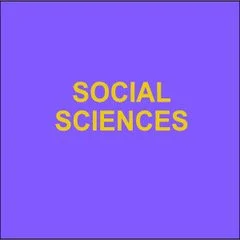By Rachel Locke , Cari Luna
Democracy cannot function without individuals stepping up to serve as representatives of their community. The presence and growth of threats and harassment directed towards elected representatives poses a direct risk to our democracy, weakening community cohesion and our ability to address collective challenges. While our research found threats and harassment to be present across political parties, it identified women as far more likely to be on the receiving end both in terms of quantity and severity. If under-represented groups are pushed out of the processes of debate and decision-making, solutions will not be oriented around the diversity of our society. Without clear data on the scale of the problem, the rise in threats and ad hominem attacks are too easily discounted by public officials, the media and the public at large. Possible consequences range from an increased potential for physical violence and the resignation from public life of elected officials. The research outlined in this report helps to expose the scale of threats and harassment, while in turn providing recommendations from those directly impacted, concerned community members and scholars on how to reinforce safe and non-threatening local governance. While several studies have shown that cities, counties and states across the country are experiencing an increased level of hostility towards elected officials, very few geographically designated areas are measuring incidents in any structured way. The research outlined in this report aims to set a clear baseline on the extent of aggressive behavior towards nearly all categories of elected office in San Diego County. Our research looked at all County School Boards, Community College Boards, City Councils, Mayors, and the County Board of Supervisors. Using a mixed methods approach that included surveys, interviews, a traditional media review and social media review, our team was able to get a clear picture of the problem both objectively and subjectively. Our findings confirm that the rise in threats and harassments targeting elected officials identified in national studies is also occurring at the local level in San Diego County. This rise in hostile threatening behavior towards elected officials is having a measurable impact on a) the ability of elected office holders to effectively participate in the public policy process; b) the likelihood of elected officials seeking to encourage others to enter public life or remain in public life themselves; and c) the psychological and physical health of office holders and their families. The vitriol we are seeing risks significantly and negatively impact the vitality of local democracy, civic engagement and effective policy making on across the policy spectrum. The vast majority of local elected officials in San Diego County are impacted. Seventyfive percent of all elected officials reported being on the receiving end of threats and harassment. Of these, 47% reported the threats and harassment occurs monthly. Thus, not only do threats and harassment impact most of San Diego County elected officials, but the aggression is taking place on a regular basis. Of those who have not themselves been threatened or harassed, nearly half said they had witnessed threats and harassment against others. These data indicate nearly 90% of all San Diego County elected officials have either been threatened or harassed or have witnessed such abuse directed at their peers. While there is not a significant partisan difference, with moderates most likely to be on the receiving end of threats and harassment, there is a big gender divide. Women are far more impacted than men. Eighty-two percent of female elected officials reported being on the receiving end of threats and harassment compared with 66% of all men. Of the 24 incidents of threats and harassment reported in local media, 19 incidents involved women, and five involved men. On social media, when examining men and women of comparable Twitter usage and prominence of position, women received 15 to 20 times the aggressive interaction as their male peers. With 66% of survey respondents reporting that threats and harassment have gone up over the course of their time in office, the implications of a continued rise are concerning. Roughly half (52%) of all survey respondents have considered leaving public service because of the threats and harassment they endure. Disaggregating by gender, twice as many women considered leaving public office as did men (61% compared to 32%). This is alarming, although not surprising given the elevated frequency and intensity of threats and harassment women face compared to men. Forty-five percent of those we surveyed stated they think new solutions are needed to handle the increasingly vitriolic environment. Several initiatives have been developed in the San Diego area in the last 2 years to provide new solutions, but more work is needed. As part of our effort to understand potential solutions, we conducted three “community conversations” across the County. The group discussions, and the recommendations that came from them, form the backbone of our recommendations, alongside insights from other national studies and academic sources. A summary of those recommendations is here, with detail provided in the relevant section below.
San Diego: University of San Diego, Kroc School, Violence, Inequality and Power Lab: Institute for Civil Civic Engagement, 2023. 36p.



















